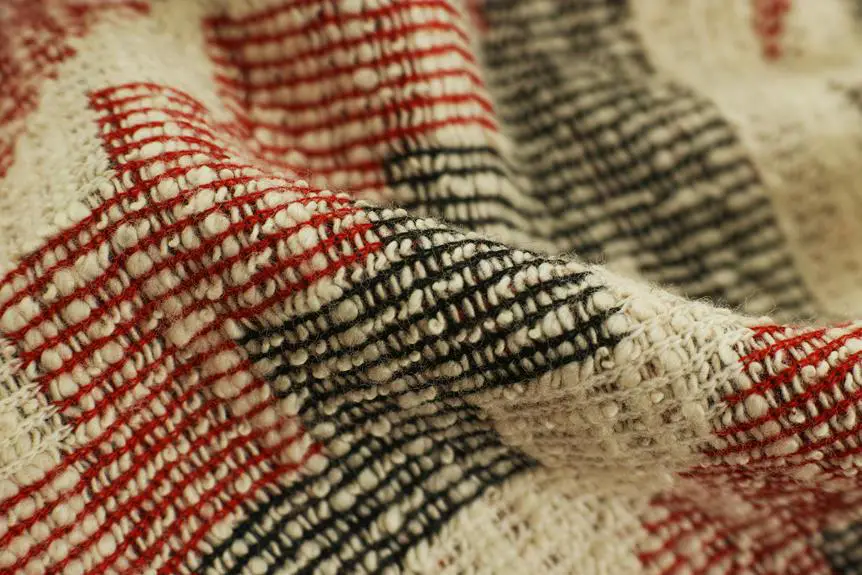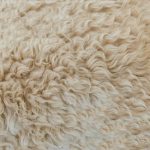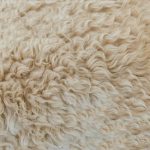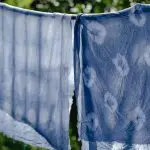When you think about fabric choices, you might find yourself torn between voile and denim. While voile offers a lightweight, airy feel perfect for those warm summer days, denim brings a sense of durability and versatility that can transition through seasons. Each fabric serves distinct purposes and comes with its own set of care requirements and styling options. So, how do you decide which one's right for your wardrobe? Let's explore their key differences and what they mean for your style choices moving forward.
Table of Contents
Overview of Voile
Voile is a lightweight, sheer fabric often made from cotton or silk that's perfect for creating airy garments. When you touch voile, you'll notice its soft, delicate texture, which drapes beautifully. This fabric's breathability makes it ideal for warm weather outfits, like blouses, dresses, and curtains. You can easily layer it without feeling bulky, allowing for a comfortable and stylish look.
One of the best things about voile is its versatility. You can use it for various projects, from elegant evening wear to casual summer dresses. Plus, its flowy nature adds a lovely movement to your creations, making them visually appealing. If you're a fan of vibrant colors and patterns, voile often comes in an array of prints, giving you plenty of options to express your personal style.
Caring for voile is straightforward, too. You can typically machine wash it on a gentle cycle and tumble dry on low. Just be sure to check the care label for specific instructions.
Overview of Denim
When you think about denim, you're considering a fabric known for its unique composition and sturdy nature.
Its durability means it can withstand wear and tear, making it a favorite for everyday wear.
Let's explore how these factors contribute to denim's long-lasting appeal and functionality.
Fabric Composition Analysis
Denim, crafted primarily from cotton, boasts a unique structure that contributes to its durability and distinct texture. This fabric typically consists of a twill weave, which gives it a diagonal ribbing pattern. This weaving technique not only enhances its strength but also sets denim apart from other fabrics like voile.
While cotton is the primary ingredient, many denim variations incorporate synthetic fibers like polyester or elastane, providing added stretch and resilience.
You'll find denim in various weights, each suited to different applications. Lighter weights work well for summer wear, while heavier weights are ideal for colder climates.
The dyeing process, usually involving indigo, creates that iconic blue hue, but denim can also be dyed in numerous colors, making it versatile for fashion.
Another aspect to consider is the finishing treatments applied to denim. These can range from stone-washing to acid-washing, giving the fabric different appearances and textures.
Durability and Longevity
Known for its remarkable strength, denim stands out as a fabric that can withstand the test of time and daily wear. When you invest in denim, you're choosing a material that's designed for durability. The tightly woven cotton fibers create a robust structure, making it resistant to tears and abrasions. Unlike other fabrics that can fray or lose shape, denim maintains its integrity even after multiple washes and wears.
You'll find that high-quality denim often becomes softer and more comfortable with age, developing a unique character over time. This aging process, known as “fading,” is celebrated in the denim community, as it adds personality to your jeans. Whether you're climbing, lounging, or going out, denim proves to be reliable and versatile.
Moreover, proper care can enhance denim's longevity. Washing in cold water and air drying can help preserve its color and shape. In contrast to lighter fabrics that might wear out quickly, denim's resilience makes it a staple in your wardrobe. You can trust that your denim won't only last but also evolve with you, making it a timeless choice for any occasion.
Fabric Composition
Voile typically consists of lightweight cotton or a cotton blend, while denim is primarily made from sturdy cotton twill. This difference in fabric composition significantly impacts the overall feel and function of each material.
Voile's lightweight nature makes it ideal for flowing garments like summer dresses and blouses. You'll notice it has a soft, airy quality, which makes it comfortable to wear in warmer weather.
On the other hand, denim's composition lends it a robust character. Made from tightly woven cotton, it's known for its durability and resistance to wear and tear. This sturdy fabric is perfect for everyday items like jeans and jackets, offering both style and longevity.
While voile can also come in blends with polyester or rayon for added sheen and texture, denim generally sticks to pure cotton or cotton blends, maintaining its classic look.
If you're looking for something light and breezy, voile is your go-to. But for something that withstands the test of time and heavy use, denim's your best bet. Understanding these fabric compositions helps you make informed choices for your wardrobe!
Weight and Breathability
When considering weight and breathability, the differences between voile and denim become even more apparent, as voile's lightweight fabric allows for excellent airflow, making it perfect for warm weather wear.
You'll find that voile drapes beautifully, creating a comfortable, airy feel against your skin. This makes it an ideal choice for summer dresses, blouses, or lightweight curtains, where breathability is essential.
On the other hand, denim is significantly heavier and denser. While it provides durability and structure, it can feel stifling in hot conditions, particularly if you're wearing fitted styles. You might sweat more in denim, which can lead to discomfort during warm days.
If you value breathability and lightness, voile is your go-to option. It keeps you cool and allows for easy movement, making it perfect for casual outings or beach days.
Alternatively, if you're looking for something more robust for cooler evenings or transitional seasons, denim will serve you well.
Ultimately, your choice will depend on your specific needs, but when it comes to weight and breathability, voile holds a clear advantage for those hot summer days.
Durability and Maintenance
Durability and maintenance differ greatly between voile and denim, with denim typically standing out for its long-lasting wear and easier care.
Denim's tightly woven fabric makes it resilient against wear and tear, allowing it to withstand repeated use without losing shape or quality. You can toss denim in the washing machine without worrying too much about damage, and it often improves with age, developing a unique patina that adds character.
On the other hand, voile is much more delicate. While it's lightweight and airy, it's also prone to snagging and tearing. You'll need to handle voile garments with care, especially when washing. Hand washing or using a gentle cycle is recommended to preserve its softness and structure. Plus, air drying is best to prevent shrinkage or distortion.
In terms of maintenance, denim requires less effort overall. You'll find that a simple wash and occasional ironing keep denim looking fresh. Voile, however, may need more attention to maintain its crisp appearance and avoid wrinkles.
Style and Versatility
When you think about style and versatility, voile and denim each offer unique benefits for your wardrobe.
Voile shines in warm weather and formal settings, while denim thrives in casual situations and adapts to various seasons.
Choosing the right fabric can elevate your look and ensure you're ready for any occasion.
Casual Vs. Formal Wear
Voile and denim each bring a unique flair to your wardrobe, effortlessly transitioning between casual and formal settings. Whether you're dressing up for a special occasion or keeping it laid-back for a weekend outing, these fabrics offer distinct advantages.
| Voile | Denim |
|---|---|
| Lightweight and airy, perfect for summer events | Durable and versatile, ideal for everyday wear |
| Flowy silhouettes elevate your look, making it suitable for formal gatherings | Classic styles like jeans can be dressed up or down easily |
| Often comes in vibrant colors and patterns, adding a playful touch | Timeless blue washes and cuts provide a casual yet chic vibe |
When you want to impress, a voile blouse or dress can elevate your appearance, while denim offers a relaxed yet stylish alternative. You can easily pair a tailored blazer with denim for a smart-casual look or accessorize a voile piece with elegant jewelry for a formal dinner. Ultimately, both fabrics can adapt to your needs, allowing you to express your personal style in any setting.
Seasonal Adaptability
Both voile and denim adapt seamlessly to different seasons, allowing you to create versatile outfits year-round.
In warmer months, you'll love how lightweight and breathable voile feels against your skin. It's perfect for flowy dresses, skirts, and blouses that keep you cool while looking chic. You can easily dress it up with heels or down with sandals, making it a go-to fabric for summer outings.
As the temperatures drop, denim steps in as your trusty companion. Its durability and warmth make it ideal for jeans, jackets, and even skirts. You can layer denim with cozy sweaters or chic scarves, ensuring you stay stylish no matter how chilly it gets. Plus, denim's classic appeal means it never goes out of style.
Both fabrics offer unique versatility. Voile shines in summer's heat, while denim provides essential warmth in colder months. By combining these two, you can create a wardrobe that transitions smoothly through the seasons.
Ideal Uses and Occasions
Choosing between voile and denim often depends on the occasion and desired comfort, as each fabric serves distinct purposes in your wardrobe. Voile is lightweight and airy, making it perfect for warm weather events, while denim offers durability and versatility for everyday wear.
When considering what to wear, think about the following ideal uses for each fabric:
- Voile: Great for summer picnics, beach outings, or outdoor weddings.
- Denim: Ideal for casual Fridays at the office, running errands, or weekend hangouts.
- Voile: Excellent for layering in transitional seasons, pairing beautifully with cardigans or light jackets.
- Denim: Perfect for a laid-back date night when you want to look effortlessly stylish.
Frequently Asked Questions
Can Voile and Denim Be Blended in One Garment?
Yes, you can blend voile and denim in one garment. This combination creates a unique texture and aesthetic, allowing you to enjoy the lightweight breathability of voile alongside the durability and structure of denim.
How Do Voile and Denim React to Dyeing Processes?
When dyeing, you'll find voile absorbs colors more uniformly due to its lightweight fibers, while denim often requires pre-treatment for even dyeing. Both fabrics can achieve vibrant results, but their processes differ significantly.
Which Fabric Is More Eco-Friendly: Voile or Denim?
When considering eco-friendliness, you'll find that voile, often made from natural fibers, tends to be more sustainable compared to denim, which usually requires harsher chemicals and more water during its production and dyeing processes.
What Are the Historical Origins of Voile and Denim?
You'll find that voile originated in France during the 19th century, while denim traces back to the Italian city of Nîmes in the late 17th century, evolving into the sturdy fabric we know today.
Can Voile and Denim Be Used in Home Decor?
Absolutely! You can use voile for light, airy curtains and denim for sturdy upholstery. Both fabrics add unique textures to your home decor, allowing you to create cozy, stylish spaces that reflect your personality.
- How Does Ring Spun Cotton Affect Garment Fit and Shape Retention? - August 13, 2024
- What Are the Challenges in Producing Ring Spun Cotton? - August 13, 2024
- Is Ring Spun Cotton Suitable for Plus-Size Clothing? - August 13, 2024






